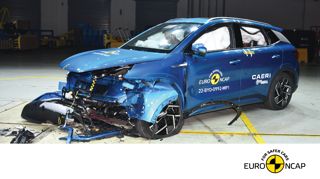Twenty per cent of parts stock makes up 80% of your parts sales. Parts staff look at parts stock from a sales perspective. However, owners look at the stock from an investment perspective.
There are therefore two differing points of view, parts staff will always think they can sell the parts whilst the owners think stock is tying up cash.
Stock aged up to six months was active stock, six-12 months sold was technically obsolete and 12 months is absolutely obsolete.
At least 70% of the parts stock should be aged less than six months old.
Otherwise he believes this would indicate parts purchasing issues.
Identifying idle stock
There are two types of retail stock.
Very few DMSs identify those parts that have low sales and did not qualify for stocking status.
The traditional method for reporting stock performance is to review the aged report for items with no sales.
However, this report can hide stock in the way of excess stock and depth.
Therefore you should consider reviewing reports showing all parts with excess stock value and also review a report of all parts with zero month no sales and a last receipt date over nine months old.
Most dealerships use the date since last sale report.
However, it is also useful to compare the no sale report and no purchase report.
You want up to three months of both reports to be similar values.
The ideal purchase to sale ratio would be 100%.
Stock greater than 13 months old should be close to each other.
If the purchase value is a lot higher than the sales value, this would indicate an excess depth and ageing issue.
New parts no sale measurement
The definition means parts on the shelf with a value that have had zero demand in 12 months or less. These parts in effect become an instant liability of the business.
This report would be a useful report and once produced, sorted by month and totalled and reviewed.
These parts would indicate:
• Over-ordering of parts to meet targets
• Returns for trade customers
• Customers failing to return for repairs
• Order errors by parts advisors
• Speculation stocking.
Dealers should understand why this stock exists and understand the primary caused.
Forecasting obsolete stock
Once a part reaches seven months in ageing it has a 15% chance of selling again.
This means there is an 85% chance that a part reaching seven months old will make it to 13 months ageing.
Therefore to predict obsolescence dealers should look at the stock value in 7 to 12 months old.
Action plan
• Obtain parts ageing report value by seven to 12 months old
• Divide the above number by six to get a monthly average. This will give a number ‘A’
• Add up what you earn in manufacturer return allowance. This will give you a number ‘B’
• Subtract A from B
• If the number is positive you will see your obsolete value grow. If it is negative you will be able to reduce your obsolete value.
Key learning points
Once stock reaches seven months old it is technically obsolete.
Identify and accurately report your true ‘liability’ or ‘idle’ inventory and manage your stock performance accordingly.
Review both date since purchase and dates since last sales report and compare.
Forecast future obsolete stock by being proactive and measuring the technical obsolescence value and accrual earned to control obsolete growth.
> This insight was gained by BDO from this year’s National Automobile Dealers Association convention.


















Login to comment
Comments
No comments have been made yet.